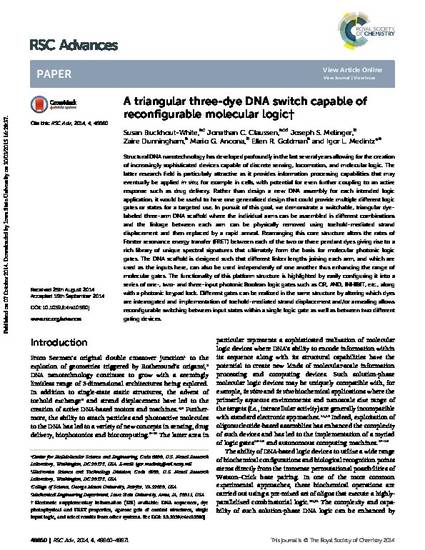
Structural DNA nanotechnology has developed profoundly in the last several years allowing for the creation of increasingly sophisticated devices capable of discrete sensing, locomotion, and molecular logic. The latter research field is particularly attractive as it provides information processing capabilities that may eventually be applied in situ, for example in cells, with potential for even further coupling to an active response such as drug delivery. Rather than design a new DNA assembly for each intended logic application, it would be useful to have one generalized design that could provide multiple different logic gates or states for a targeted use. In pursuit of this goal, we demonstrate a switchable, triangular dye-labeled three-arm DNA scaffold where the individual arms can be assembled in different combinations and the linkage between each arm can be physically removed using toehold-mediated strand displacement and then replaced by a rapid anneal. Rearranging this core structure alters the rates of Förster resonance energy transfer (FRET) between each of the two or three pendant dyes giving rise to a rich library of unique spectral signatures that ultimately form the basis for molecular photonic logic gates. The DNA scaffold is designed such that different linker lengths joining each arm, and which are used as the inputs here, can also be used independently of one another thus enhancing the range of molecular gates. The functionality of this platform structure is highlighted by easily configuring it into a series of one-, two- and three-input photonic Boolean logic gates such as OR, AND, INHIBIT, etc., along with a photonic keypad lock. Different gates can be realized in the same structure by altering which dyes are interrogated and implementation of toehold-mediated strand displacement and/or annealing allows reconfigurable switching between input states within a single logic gate as well as between two different gating devices.
Available at: http://works.bepress.com/jonathan_claussen/8/

This is an article from RSC Advances 4 (2014): 48860, doi: 10.1039/c4ra10580j. Posted with permission.